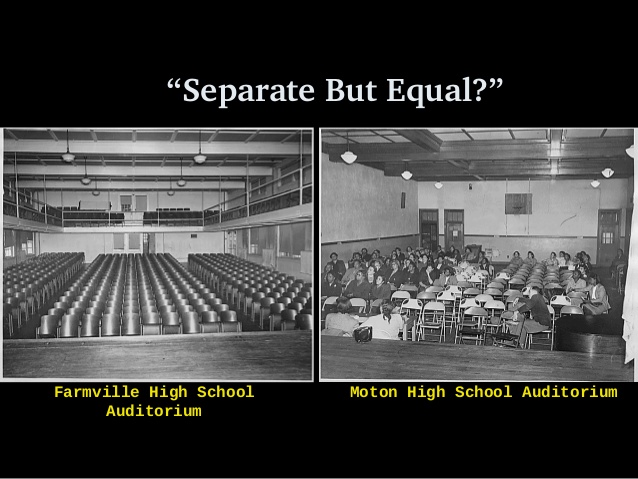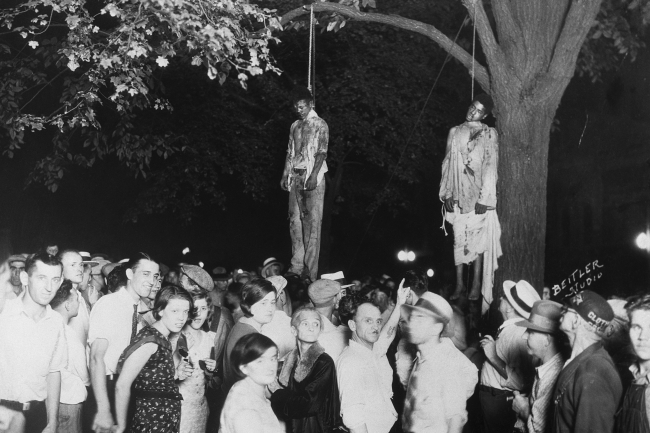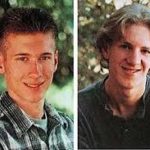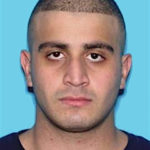The Land of the Free (except slaves)
The year 1619 was the year in which the first black or ”African” slaves by Dutch ships arrived in the British colonies of North America or what is known today as The United States. From the year 1619 to 1865 the blacks in America endured the worst kind of slavery and servitude mankind had never known before. We know about it. We hear it every year during black history month ( even though most accounts are filtered and downplayed to protect the public from all of the horrific atrocities that befell the American slaves ). In the year 1865 the 13th amendment and the Emancipation Proclamation came into place changing the status of “slaves” to “free”. XIII NEITHER SLAVERY NOR INVOLUNTARY SERVITUDE, EXCEPT AS A PUNISHMENT FOR CRIME WHEREOF THE PARTY SHALL HAVE BEEN DULY CONVICTED, SHALL EXIST WITHIN THE UNITED STATES, OR ANY PLACE SUBJECT TO THEIR JURISDICTION1619-1865 = 246 Years a Slave
By reading this we can safely deduce that this amendment left open 2 forms of slavery and servitude allowed in the United States. Number 1: Penal labor when convicted of a crime. When you are convicted of a crime and go to jail or prison you are then again enslaved and become a source of free labor for the government or state. We know that there has been a mass incarceration of blacks since this institution on this proclamation; even when it was illegal and a jail-able offense just to look at a person of another race or to even gather together. Therefore putting them in prisons and reducing them to slavery once again.Credit System = Debt System
The second kind of slavery or servitude is allowed with the words “nor involuntary servitude” leaving open voluntary servitude. Well who would volunteer to slavery or servitude? Well the day you have children you voluntarily give them over to your government to be issued certificates and numbers that place them within their system of ownership. They become property just like a vehicle or home. If you skip a tax payment on your home or car even if you hold the title can they still not come take it? Stop sending your child to school can they not come take it? If it is yours no one should be able to stake claim on whats yours and take it.Once you or your children are entered into this system and assigned a class, they are indoctrinated and then put into a work-field in which many make only enough to pay for housing and food. Then a system of debt is imposed upon them saying you do not make enough so you have to get credit, extend yourself beyond what you make and pay it back, therefore ensuring your remain within their system of work to continuously pay off the debt you have incurred to live. And they promote this system as more valuable saying the more we can extend a debt to you the higher your status will be.1865 – 1965 = 100 Years a Slave
So since 1619 the “African Americans” in America has been subjected to many different forms of slavery, and still subject to rules laws and practices that were enacted before, during and after the times of “voluntary servitude” in the United States. 1865 did not end slavery in the United States at all, it just concealed it under better terms.In the South, there were “slave codes“; the goal was of these codes were to reduce influence of free blacks (particularly after slave rebellions) because of their potential influence on slaves. Restrictions included prohibiting them from voting (although North Carolina allowed this before 1831), bearing arms, gathering in groups for worship and learning to read and write. A major purpose of these laws was to preserve slavery.Black Codes
Black Codes were laws In the United States passed by Democrat-controlled Southern states in 1865 and 1866, after the Civil War. Black Codes were also enacted by Northern states such as Illinois, Indiana, Michigan, and New York prior to the Civil War to ban free blacks from residing in those states. These codes were modeled after the earlier slave codes and had the intent of restricting the freedom of black people, and of compelling them to work in a labor economy based on low wages or debt. States were particularly concerned with controlling movement and labor, as slavery had given way to a free labor system. Although freedmen had been emancipated, their lives were greatly restricted by the Black Codes.Black Codes were part of a larger pattern of Southern whites trying to suppress the new freedom of emancipated black slaves, the freedmen.
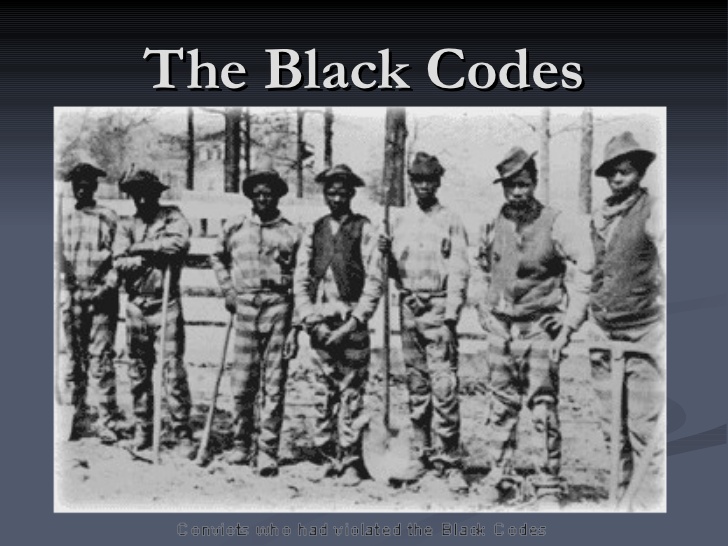
The defining feature of the Black Codes was broad vagrancy law. Homeless unemployed Black Americans were arrested and fined as vagrants or a person, often in poverty, who wanders from place to place without a home or regular employment or income.. Usually, the person could not afford the fine, and so was sent to work in convict leasing camps. In these camps is where they would remain, “paying their debt”, and inevitably be re-enlisted back into slavery by white slave holders.which allowed local authorities to arrest freedpeople for minor infractions and commit them to involuntary labor. Preexisting White American belief of Black inferiority informed post-war attitudes and white racial dominance continued to be culturally embedded; whites believed both that Black people were destined for servitude and that they would not work unless physically compelled.The racial divisions which slavery had created immediately became more obvious. Blacks also bore the brunt of Southern anger over defeat in the War. The Black Codes outraged public opinion in the North because it seemed the South was creating a form of quasi-slavery to negate the results of the war.The 1865–1866 Black Codes were an overt manifestation of the system of white supremacy that continued to dominate the American South.
Because legal enforcement depended on so many different local codes, which underwent less scrutiny than statewide legislation, , that even under military rule, local jurisdictions were able to continue a racist pattern of law enforcement, as long as it took place under a legal regime that was superficially race-neutral. In 1893–1909 every Southern state except Tennessee passed new vagrancy laws. These laws were more severe than those passed in 1865, and used vague terms that granted wide powers to police officers enforcing the law. In wartime, Blacks might be disproportionately subjected to “work or fight” laws, which increased vagrancy penalties for those not in the military.
A general system of legitimized anti-Black violence, as exemplified by the Ku Klux Klan, played a major part in enforcing the practical law of white supremacy. The constant threat of violence against Black people (and White people who sympathized with them) maintained a system of extralegal terror.
“Jump Jim Crow”
The origin of the phrase “Jim Crow” has been attributed to “Jump Jim Crow”, a song-and-dance caricature of blacks performed by a white actor in blackface. As a result of Rice’s fame, “Jim Crow” by 1838 had become a pejorative expression meaning “Negro”. When southern legislatures passed laws of racial segregation directed against blacks at the end of the 19th century, these statutes became known as Jim Crow laws.
Jim Crow laws were state and local laws that enforced racial segregation in the Southern United States beginning in the 1890’s. These laws continued to be enforced until 1965. They mandated by law racial segregation in all public facilities in the states of the former Confederate States of America, starting in 1896 with a “separate but equal” status for Blacks in railroad cars. These Jim Crow laws revived principles of the 1865 and 1866 Black Codes, which had previously restricted the civil rights and civil liberties of Blacks in America.
White Southerners encountered problems in learning free labor management after the end of slavery, and they resented black Americans, who represented the Confederacy’s Civil War defeat: With white supremacy being challenged throughout the South; many whites sought to protect their former status by threatening, lynching and killing blacks who exercised their new rights.” White Democrats used their power to segregate public spaces and facilities in law and reestablish social dominance over blacks in the South.
Separate but Equal: The Law of the Land
Separate but equal was a legal doctrine in United States constitutional law according to which racial segregation did not violate the Fourteenth Amendment to the United States Constitution, adopted in 1868, which guaranteed “equal protection” under the law to all citizens. Under the doctrine, as long as the facilities provided to each race were equal, state and local governments could require that services, facilities, public accommodations, housing, medical care, education, employment, and transportation be segregated by race, which was already the case throughout the former Confederacy
Though segregation laws existed before this decision it emboldened segregation states during the Jim Crow era, which had commenced in 1876 and supplanted the Black Codes, which restricted the civil rights and civil liberties of blacks during the Reconstruction Era after the civil war. 18 states had segregation laws.
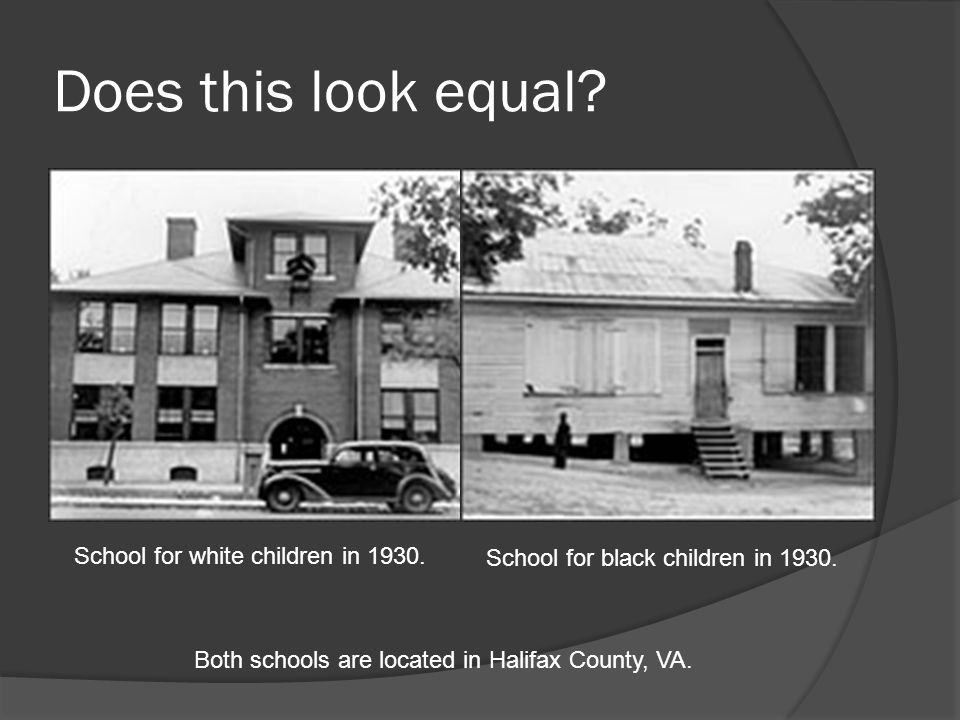 In practice the separate “but equal” facilities provided to blacks were always separate but rarely equal; usually they were not even close to equal, or they did not exist at all. The facilities and social services offered to African-Americans were almost always of lower quality than those offered to white Americans; for example, many African American schools received less public funding per student than nearby white schools. In Texas, the state established a state-funded law school for white students without any law school for black students. The majority of all black schools received old textbooks, used equipment, and poorly prepared or trained teachers. A study conducted by the American Psychological Association found that black students were emotionally impaired when segregated at a young age. State voting right restrictions, such as literacy tests and poll taxes created an environment that made it almost impossible for blacks to vote. The finding contributed to at least 58 more years of legalized discrimination and oppression against black and colored people in the United States.
In practice the separate “but equal” facilities provided to blacks were always separate but rarely equal; usually they were not even close to equal, or they did not exist at all. The facilities and social services offered to African-Americans were almost always of lower quality than those offered to white Americans; for example, many African American schools received less public funding per student than nearby white schools. In Texas, the state established a state-funded law school for white students without any law school for black students. The majority of all black schools received old textbooks, used equipment, and poorly prepared or trained teachers. A study conducted by the American Psychological Association found that black students were emotionally impaired when segregated at a young age. State voting right restrictions, such as literacy tests and poll taxes created an environment that made it almost impossible for blacks to vote. The finding contributed to at least 58 more years of legalized discrimination and oppression against black and colored people in the United States.
Strange Fruit Hanging From Those Trees
Lynching is an extrajudicial punishment by an informal group. It is most often used to characterize informal public executions by a mob in order to punish an alleged transgressor, or to intimidate a group. The verb comes from the phrase “Lynch Law”, a term for a punishment without trial. Two Americans during this era are generally credited for inventing the phrase: Charles Lynch and William Lynch, who both lived in Virginia in the 1780s. Charles Lynch was a Virginia planter and American Revolutionary who headed a county court in Virginia which incarcerated Loyalist supporters of the British for up to one year during the war. While he lacked proper jurisdiction, he claimed this right by arguing wartime necessity. Subsequently, he prevailed upon the Congress of the Confederation to pass a law which specifically exonerated him and his associates from wrongdoing. This move by the Congress provoked controversy, and it was in connection with this that the term “Lynch law”, meaning the assumption of extrajudicial authority, came into common parlance in the United States leading to many “lynchings” of blacks in the United States.
In the United States, during the decades before the Civil War assertive free-Blacks, Latinos in the South West and runaways were the objects of racial lynching. But lynching attacks on U.S. blacks, especially in the South, increased dramatically in the aftermath of the Civil War, after slavery had been abolished and recently freed black men gained the right to vote. More than 3500 were lynched in the United States between 1882 and 1968.
Lynching, as a form of punishment for presumed criminal offenses were performed by self-appointed commissions, mobs, or vigilantes without due process of law took place in the United States both before and after the American Civil War, most commonly in Southern states and Western frontier settlements. Racist extremism with an eye to viciousness and public spectacle was frequently evident, as exemplified by the first lynching in St. Louis when in 1835 a black man named McIntosh who killed a deputy sheriff while being taken to jail was captured, chained to a tree, and burned to death on a corner lot downtown in front of a crowd of over 1,000 people. In the South, members of the abolitionist movement or other people who opposed slavery were usually targets of lynch mob violence before the Civil War. During the war, Southern Home Guard units sometimes lynched white Southerners who they suspected of being Unionists or deserters.
After the war, southern whites struggled to maintain their social dominance. Secret vigilante and insurgent groups such as the Ku Klux Klan (KKK) instigated extrajudicial assaults and killings in order to keep whites in power and discourage freedmen from voting, working, gathering together, worshipping and getting educated. They also sometimes attacked Northerners, teachers, and agents of the Freedmen’s Bureau. Mobs usually alleged crimes for which they lynched blacks. In the late 19th century, however, journalist Ida B. Wells showed that many presumed crimes were either exaggerated or had not even occurred. Mob violence arose as a means of enforcing white supremacy and it frequently verged on systematic political terrorism. “The Ku Klux Klan, paramilitary groups, and other whites united by frustration and anger ruthlessly defended the interests of white supremacy. The magnitude of the extralegal violence which occurred during election campaigns reached epidemic proportions. During Reconstruction after the war, the Ku Klux Klan and others used lynching as a means to control blacks, forcing them to work for planters and preventing them from exercising their right to vote.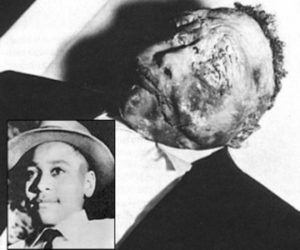
Emmett Louis Till (July 25, 1941 – August 28, 1955) was a 14-year-old African-American who was lynched in Mississippi in 1955, after a white woman said she was offended by him in her family’s grocery store. Till’s reported behavior, perhaps unwittingly, violated the strictures of conduct for an African American male interacting with a white woman in the Jim Crow era South. Several nights after the store incident, a few men went armed to Till’s great-uncle’s house and abducted the boy. They took him away and beat and mutilated him before shooting him in the head and sinking his body in the Tallahatchie River. Three days later, Till’s body was discovered and retrieved from the river.
In September 1955, Bryant and Milam were acquitted by an all-white jury of Till’s kidnapping and murder. Protected against double jeopardy, the two men publicly admitted in a 1956 interview with Look magazine that they had intentionally killed Till. In 2017 the woman accuser admitted that “inappropriate action” from Emmett till never occurred.
A lot of these laws, practices and doctrines were overturned and supposedly outawed by a series of Supreme Court decisions, starting with Brown v. Board of Education of 1954. However, the overturning of segregation laws in the United States was a long process that lasted through much of the 1950s, 1960s, and 1970s, involving federal legislation (especially the Civil Rights Act of 1964), and many court cases.
1965 – 2017 = 52 Years a Slave
The Civil Rights Act of 1964 is a landmark civil rights and US labor law in the United States[5] that outlaws discrimination based on race, color, religion, sex, or national origin.[6] It prohibited unequal application of voter registration requirements, racial segregation in schools, employment, and public accommodations. Its duty is to guarantee all citizens equal protection of the laws under the Fourteenth Amendment and its duty to protect voting rights under the Fifteenth Amendment. The Act was signed into law on July 2, 1964.
This law was not without opposition. When the bill came before the full Senate for debate on March 30, 1964, the “Southern Bloc” of 18 southern Democratic Senators and one Republican Senator led by Richard Russell (D-GA) launched a filibuster to prevent its passage. Said Russell: “We will resist to the bitter end any measure or any movement which would have a tendency to bring about social equality and intermingling and amalgamation of the races in our (Southern) states.
There were white business owners who claimed that Congress did not have the constitutional authority to ban segregation in public accommodations. For example, Moreton Rolleston, the owner of a motel in Atlanta, Georgia, said he should not be forced to serve black travelers, saying, “the fundamental question…is whether or not Congress has the power to take away the liberty of an individual to run his business as he sees fit in the selection and choice of his customers”. Rolleston claimed that the Civil Rights Act of 1964 was a breach of the Fourteenth Amendment and also violated the Fifth and Thirteenth Amendments by depriving him of “liberty and property without due process”.
Resistance to the public accommodation clause continued for years on the ground, especially in the South. When local college students in Orangeburg, South Carolina attempted to desegregate a bowling alley in 1968, they were violently attacked, leading to rioting and what became known as the “Orangeburg massacre.” Resistance by school boards continued into the next decade, with the most significant declines in black-white school segregation only occurring at the end of the 1960s and the start of the 1970s in the aftermath of the Green v. County School Board of New Kent County (1968) court decision that held that New Kent County‘s freedom of choice plan did not constitute adequate compliance with the school board’s responsibility to determine a system of admission to public schools on a non-racial basis. The Supreme Court mandated that the school board must formulate new plans and steps towards realistically converting to a desegregated system.
Can't We All Just Get Along
Rodney King Riots
1:21:48
0:16
Fast Forward to the 1992 Los Angeles riots, also known as the Rodney King riots. These riots were a series of riots, lootings, arsons, and civil disturbances that occurred in Los Angeles County, California in April and May 1992. The unrest began after a trial jury acquitted four officers of the Los Angeles Police Department of the use of excessive force in the videotaped arrest and beating of Rodney King. It then spread throughout the Los Angeles metropolitan area as thousands of people rioted over a six-day period following the announcement of the verdict. Before the release of the Rodney King tape which showed footage of King being beaten by police while lying on the ground, minority community leaders in Los Angeles had repeatedly complained about harassment and excessive use of force by LAPD officers. An independent commission formed after the release of the tape concluded that a “significant number” of LAPD officers “repetitively use excessive force against the public and persistently ignore the written guidelines of the department regarding force,” and that bias related to race, gender, and sexual orientation were regularly contributing factors in use of excessive force.
Mark Fuhrman and the O.J. Simpson Trial
The Fuhrman tapes are 13 hours of taped interviews given by Los Angeles police officer Mark Fuhrman to writer Laura McKinny between 1985 and 1994. The tapes include many racist slurs and remarks made by Fuhrman, including uses of the word “nigger,” descriptions of police brutality perpetrated on black suspects, misogynist slurs and descriptions of the harassment and intimidation of female Los Angeles police officers by male officers. Portions of the tapes were admitted into evidence during the O. J. Simpson murder case. In the tapes Fuhrman also made many references to the “planting of evidence” and implied that police brutality and evidence planting were common practice in the Los Angeles Police Department.
The 1995 OJ Simpson murder trial was one of the most sensational moments in recent US history. The world watched as the fault-lines of American race relations were laid bare in a Los Angeles courtroom. Simpson, a former American football player and actor, was found not guilty of murder in October 1995. His eight-month trial took place just three years since riots had rocked LA, following the acquittal of four white LAPD officers filmed viciously beating black motorist Rodney King. The O.J. Simpson trial as well as the Rodney King Trial highlighted and put on center stage racial tensions and injustices suffered by Blacks in America in the 1990’s.
Black Lives Matter
Fast Forward to 2013 after George Zimmerman was acquitted of the shooting death of black unarmed 17 year old Trayvon Martin. This killing as well as its subsequent acquittal was made into a public outcry because of decades of unfair and unequal treatment towards the Black communities and people, especially within the criminal justice system and by the hands of police whose duty was supposed to be to protect and serve them.
The killing of an unarmed 17 year old black male walking home with nothing but an Arizona tea and a bag of skittles and no one was held accountable; served to prove to the black community that no matter what you did or didn’t do as long as you were black you were an open target and the system would not grant fair justice for them, even in death.
In the weeks, months and years since there began to be a public outcry against black lives that were taken senselessly by the criminal justice system; the Black Lives Matter movement began to bring attention and focus to the tragic losses of life that continued to occur within the black communities by the justice system.
Some of the most notable killings were:
Michael Brown
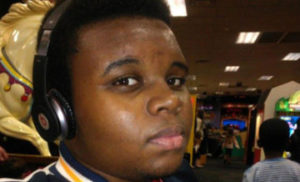 Unarmed Michael Brown, 18, was shot and killed by Ferguson police officer Darren Wilson. In November, a grand jury declined to charge Wilson in the fatal shooting. Brown’s death and the lack of charges against Wilson sparked protests, some of them violent, in Ferguson and across the nation. On March 4, the Department of Justice announced that it too would not charge Wilson for the shooting after an exhaustive investigation.
Unarmed Michael Brown, 18, was shot and killed by Ferguson police officer Darren Wilson. In November, a grand jury declined to charge Wilson in the fatal shooting. Brown’s death and the lack of charges against Wilson sparked protests, some of them violent, in Ferguson and across the nation. On March 4, the Department of Justice announced that it too would not charge Wilson for the shooting after an exhaustive investigation.
Tamir Rice
 Tamir Rice, 12, was shot and killed by Cleveland police after officers mistook his toy gun for a real weapon. The two police officers involved, Timothy Loehmann and Frank Garmback, have not been charged. Rice’s family has filed wrongful death lawsuit against the officers and the city of Cleveland.
Tamir Rice, 12, was shot and killed by Cleveland police after officers mistook his toy gun for a real weapon. The two police officers involved, Timothy Loehmann and Frank Garmback, have not been charged. Rice’s family has filed wrongful death lawsuit against the officers and the city of Cleveland.
Eric Garner
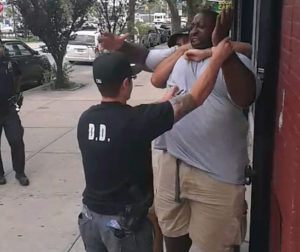 Eric Garner, 43, was killed after he was put in an illegal chokehold for 15 seconds by a white police officer — allegedly for selling loose cigarettes. Garner said “I can’t breathe” 11 times as he was held down by several officers on a sidewalk. The officer who put Garner in the chokehold, Daniel Pantaleo, was not charged. Garner’s death sparked peaceful protests across the nation, with demonstrators adopting the phrase “I Can’t Breathe” as a symbol and slogan of protest.
Eric Garner, 43, was killed after he was put in an illegal chokehold for 15 seconds by a white police officer — allegedly for selling loose cigarettes. Garner said “I can’t breathe” 11 times as he was held down by several officers on a sidewalk. The officer who put Garner in the chokehold, Daniel Pantaleo, was not charged. Garner’s death sparked peaceful protests across the nation, with demonstrators adopting the phrase “I Can’t Breathe” as a symbol and slogan of protest.
Philando Castile
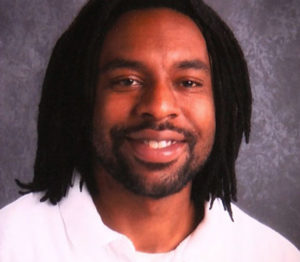 On July 6, 2016, Philando Castile was shot and killed by a St. Anthony, Minnesota, police officer, after being pulled over in Falcon Heights, a suburb of Saint Paul. A St. Anthony police officer patrolling Larpenteur Avenue radioed to a nearby squad that he planned to pull over the car and check the IDs of the driver and passenger, saying, “The two occupants just look like people that were involved in a robbery. The driver looks more like one of our suspects, just because of the wide-set nose. I couldn’t get a good look at the passenger.”
On July 6, 2016, Philando Castile was shot and killed by a St. Anthony, Minnesota, police officer, after being pulled over in Falcon Heights, a suburb of Saint Paul. A St. Anthony police officer patrolling Larpenteur Avenue radioed to a nearby squad that he planned to pull over the car and check the IDs of the driver and passenger, saying, “The two occupants just look like people that were involved in a robbery. The driver looks more like one of our suspects, just because of the wide-set nose. I couldn’t get a good look at the passenger.”
According to dashcam video, after Yanez asked for Castile’s driver’s license and proof of insurance, Castile gave him his proof of insurance card, which Yanez appeared to glance at and tuck in his outer pocket. Castile then calmly informed Yanez: “Sir, I have to tell you that I do have a firearm on me.” Before Castile completed the sentence, Yanez interrupted and calmly replied, “OK,” and placed his right hand on the holster of his own holstered weapon. Yanez said, “Okay, don’t reach for it, then … don’t pull it out.” Castile responded, “I’m not pulling it out,” and Reynolds also said, “He’s not pulling it out.” Yanez repeated, raising his voice, “Don’t pull it out!” as he quickly pulled his own gun with his right hand and reached inside the driver’s window with his left hand. Reynolds screamed, “No!” Yanez removed his left arm from the car and fired seven shots in the direction of Castile in rapid succession. Reynolds yelled, “You just killed my boyfriend!” Castile moaned and said, “I wasn’t reaching for it.” Reynolds loudly said, “He wasn’t reaching for it.” Before she completed her sentence, Yanez again screamed, “Don’t pull it out!” Reynolds responded, “He wasn’t.” Yanez yelled, “Don’t move! Fuck!” Of the seven shots fired by Yanez at point blank range, five hit Castile and two of those hit and pierced his heart.
On June 16, 2017, Officer Yanez was acquitted of all charges. He had been charged with manslaughter and reckless discharge of a firearm.
Sandra Bland
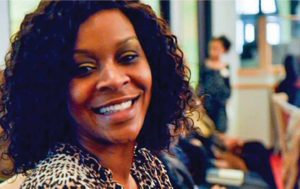 Sandra Bland was a 28-year-old black woman who was found hanged in a jail cell in Waller County, Texas, on July 13, 2015, three days after being arrested during a traffic stop. Officer Encinia stopped Bland on the afternoon of July 10, 2015 in Prairie View, Texas, for failure to signal a lane change. Dashcam footage shows that Encinia initially wrote a routine traffic violation warning for Bland. After he returns to her car and speaks briefly to her again, he asks her to put out her cigarette. She responds, “Why do I have to put out a cigarette when I’m in my own car?” Encinia orders her to “get out of the car”, and, when she repeatedly refuses to exit, he tells her she is under arrest. Bland repeatedly asks why she is under arrest, and Encinia responds, “I am giving you a lawful order.” She refuses to leave her car, stating she is not under arrest as she is unaware of the reason and not obliged to. Encinia then opens her car door and tells her more than a dozen times to get out of the car before he tries to pull her out. After struggling, he draws his taser and points it at Bland, shouting “I will light you up! Get out! Now!”, at which point she exits her vehicle.
Sandra Bland was a 28-year-old black woman who was found hanged in a jail cell in Waller County, Texas, on July 13, 2015, three days after being arrested during a traffic stop. Officer Encinia stopped Bland on the afternoon of July 10, 2015 in Prairie View, Texas, for failure to signal a lane change. Dashcam footage shows that Encinia initially wrote a routine traffic violation warning for Bland. After he returns to her car and speaks briefly to her again, he asks her to put out her cigarette. She responds, “Why do I have to put out a cigarette when I’m in my own car?” Encinia orders her to “get out of the car”, and, when she repeatedly refuses to exit, he tells her she is under arrest. Bland repeatedly asks why she is under arrest, and Encinia responds, “I am giving you a lawful order.” She refuses to leave her car, stating she is not under arrest as she is unaware of the reason and not obliged to. Encinia then opens her car door and tells her more than a dozen times to get out of the car before he tries to pull her out. After struggling, he draws his taser and points it at Bland, shouting “I will light you up! Get out! Now!”, at which point she exits her vehicle.
Once Bland is out of her car, the officer orders her to put down her cell phone and tells her she is going to jail. In response, Bland asks why. In the video, both Bland and the officer move to the passenger side of the vehicle and are no longer visible, while they continue to argue heatedly. Bland can be heard crying and screaming. Police stated that at 9:00 a.m. July 13, Bland was found “in a semi-standing position” hanging in her cell. Her death, which was ruled a suicide, was followed by protests against her arrest, disputing the cause of death, and alleging racial violence against her.
A grand jury declined to indict the county sheriff and jail staff for a felony relating to Bland’s death. In January 2016, Encinia was indicted for perjury for making false statements about the circumstances surrounding Bland’s arrest and he was subsequently fired by the Texas Department of Public Safety In September 2016, Bland’s mother settled a wrongful death lawsuit against the county jail and police department for $1.9 million and some procedural changes. In June 2017, the perjury charge against Encinia was dropped in return for his agreement to end his law enforcement career.
Now They Seek to Label YOU as Terrorists!
Since its inception the Black Lives Matter movement has received stark criticism from its opposers. Some critics accuse the movement of being anti-police. A Sergeant of the Dallas Police Department filed an unsuccessful lawsuit against Black Lives Matter in September 2016, which accused the group of inciting a “race war.” Former New York City Mayor Rudy Giuliani said that Black Lives Matter is “inherently racist” and called the movement anti-American. According to Giuliani, the Black Lives Matter movement divides people and exacerbates racial tensions.
There have also been attempts and petitions signed to label the Black Lives Matter movement as a terrorist group, citing “Terrorism is defined as ‘the use of violence and intimidation in pursuit of political aims… This definition is the same definition used to declare ISIS and other groups, as terrorist organizations…Black Lives Matter earned this title due to its actions in Ferguson, Baltimore, and even at a Bernie Sander rally, as well as all over the United States and Canada.” It been asked that the Pentagon recognize the group as such “on the grounds of principle, integrity, morality, and safety.” (rumor has it they have labeled them as that).
In a memo obtained by Foreign Policy from early August, the FBI claims that the continued concern over “alleged” police abuse has fueled a rise in violence against police. And that rise in violence has produced a new kind of terrorist. It reads in part: “The FBI assesses it is very likely Black Identity Extremist (BIE) perceptions of police brutality against African Americans spurred an increase in premeditated, retaliatory lethal violence against law enforcement and will very likely serve as justification for such violence,.” “The FBI assesses it is very likely incidents of alleged police abuse against African Americans since then have continued to feed the resurgence in ideologically motivated, violent criminal activity within the Black Identity Extremist movement,” the report states. So basically, the future likelihood of threats from a group that as far as we know does not exist (yet) is a potential threat that needs to be taken care of.
The National Defense Authorization Act greatly expands the power and scope of the federal government to fight the War on Terror, including codifying into law the indefinite detention of terrorism suspects without trial. Under the new law the US military has the power to carry out domestic anti-terrorism operations on US soil. Former president Barack Obama when discussing this law was quoted saying “There may be a number of people who cannot be prosecuted for past crimes, in some cases because evidence may be tainted; but who nonetheless pose a threat to the security of the United States.” There may be = “there is a possibility” just like there was a possibility of weapons of mass destruction in Iraq… He was also quoted saying “If and when we determine that the United States must hold individuals to keep them from carrying out an act of war; we will do so within a system that involves judicial and congressional oversight.” and “Right now in distant training camps and in crowded cities, there are people plotting to take American lives. That will be the case a year from now; five years from now; and in all probability ten years from now.” In other words if we think, feel or assume you are a threat to the United States in any form you are a terrorist (again with the definition being “the use of violence and intimidation in pursuit of political aims”) in order to prevent these things from possibly and probably inevitably occurring we have to detain these people on our assumptions without trial until we determine there is no threat.
Dig That Ditch For Yourselves
For 398 years from 1619 to 2017 blacks in America have been violently targeted for oppression and unfair treatment for political as well as financial gain. Whether it was via the whip and shotguns by the slave master used to intimidate the slaves and keep them under control, the Ku Klux Klan and their nooses, robes and burning crosses keeping blacks from voting, or even by the police and military force that violently shuts down peaceful protests and marches against unfair treatment and arrest any participants they’d like with threats of more violence and arrests if their protests continue. After 398 years of this you seek to label blacks as the terrorists?
Just in case no one was keeping track; it was not blacks who hijacked and crashed 2 commercial jets into twin towers of World Trade Center; and hijacked 2 more jets and crashed them into the Pentagon and a field in rural Pa. leaving Total dead and missing around 2,992. It wasn’t blacks who placed a car bomb outside a federal office building in Oklahoma City, which exploded collapsing wall and floors killing 168 people, including 19 children and 1 person who died in rescue effort. It wasn’t blacks who mailedlLetters containing anthrax spores to several news media offices and two Democratic U.S. Senators, killing five people and infecting 17 others.
Kipland Philip Kinkel (born August 30, 1982)
In May 1998 After killing his parents at home, 15-year-old Kip Kinkel, drove to Thurston High School, where he killed two students and wounded 23 others.
Eric Harris and Dylan Klebold
In 1999 18-year-old Eric Harris and 17-year-old Dylan Klebold, students at Columbine High School, killed twelve students and one teacher. They injured 21 additional people, and three more were injured while attempting to escape the school. The pair committed suicide at the end of the massacre.
Jeffrey Weise
In 2005 16-year-old student Jeffrey Weise, killed his grandfather and grandfather’s companion at their home. He drove to Red Lake Senior High School. Armed with his grandfather’s police weapons, Weise killed five students, one teacher, and one security guard, wounding seven others, before committing suicide.
Seung-Hui Cho
In 2007 23-year-old student, Seung-Hui Cho, killed thirty-two students and faculty members at Virginia Tech, and wounded another seventeen students and faculty members in two separate attacks before committing suicide.
Adam Lanza
20-year-old Adam Lanza, killed twenty-six people and himself. He first killed his mother at their shared home before taking her guns and driving to the school. Lanza brought four guns with him. He killed twenty first-grade children aged six and seven during the attack at school, along with six adults, including four teachers, the principal, and the school psychologist. Two other persons were injured. Lanza then killed himself as police arrived at the school.
James Holmes
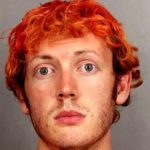 James Eagan Holmes was convicted of the murder of 12 people and the attempted murder of 70 others in the 2012 Aurora shooting at a Century movie theater in Aurora, Colorado. Holmes surrendered outside the theater and informed officers he had also booby-trapped his apartment with explosives, which were defused one day later by a bomb squad.
James Eagan Holmes was convicted of the murder of 12 people and the attempted murder of 70 others in the 2012 Aurora shooting at a Century movie theater in Aurora, Colorado. Holmes surrendered outside the theater and informed officers he had also booby-trapped his apartment with explosives, which were defused one day later by a bomb squad.
Omar Mateen
Police say 29-year-old Omar Mateen opened fire at Pulse Orlando nightclub in Orlando, Fla. in June 2016. At least 49 people were killed, and more than 50 were wounded and taken to area hospitals. Mateen was killed during a firefight with police.
That’s 140 deaths and 150 injuries just between these 8 people alone.
Strange Fruit in a Strange Land
Acts 7:6
Acts 7:6 And God spake on this wise, That his seed should sojourn in a strange land; and that they should bring them into bondage, and entreat them evil four hundred years. 7 And the nation to whom they shall be in bondage will I judge, said God: and after that shall they come forth, and serve me in this place.
We know the story of Abraham and his children, and the covenant in which God made with him. Genesis 15:12 And when the sun was going down, a deep sleep fell upon Abram; and, lo, an horror of great darkness fell upon him.13 And he said unto Abram, Know of a surety that thy seed shall be a stranger in a land that is not theirs, and shall serve them; and they shall afflict them four hundred years;14 And also that nation, whom they shall serve, will I judge: and afterward shall they come out with great substance.15 And thou shalt go to thy fathers in peace; thou shalt be buried in a good old age.16 But in the fourth generation they shall come hither again: for the iniquity of the Amorites is not yet full.
You is Kind You is Smart You is Important
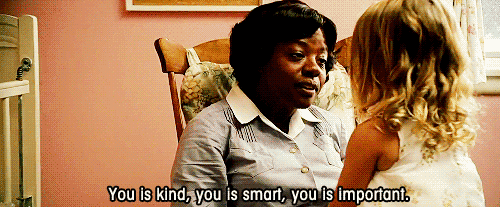 You are that seed. This and many other prophecies are about you. The Bible is the other side of black history; that has not been taught to you.
You are that seed. This and many other prophecies are about you. The Bible is the other side of black history; that has not been taught to you.
Jeremiah 29:14 And I will be found of you, saith the Lord: and I will turn away your captivity, and I will gather you from all the nations, and from all the places whither I have driven you, saith theLord; and I will bring you again into the place whence I caused you to be carried away captive.
God is calling his children.
2 Chronicles 7:14 If my people, which are called by my name, shall humble themselves, and pray, and seek my face, and turn from their wicked ways; then will I hear from heaven, and will forgive their sin, and will heal their land.
I’ll leave off with these New Testament parables which were written about these things:
Matthew 13:24 Another parable put he forth unto them, saying, The kingdom of heaven is likened unto a man which sowed good seed in his field:25 But while men slept, his enemy came and sowed tares among the wheat, and went his way.26 But when the blade was sprung up, and brought forth fruit, then appeared the tares also.27 So the servants of the householder came and said unto him, Sir, didst not thou sow good seed in thy field? from whence then hath it tares?28 He said unto them, An enemy hath done this. The servants said unto him, Wilt thou then that we go and gather them up?29 But he said, Nay; lest while ye gather up the tares, ye root up also the wheat with them.30 Let both grow together until the harvest: and in the time of harvest I will say to the reapers, Gather ye together first the tares, and bind them in bundles to burn them: but gather the wheat into my barn.
31 Another parable put he forth unto them, saying, The kingdom of heaven is like to a grain of mustard seed, which a man took, and sowed in his field:32 Which indeed is the least of all seeds: but when it is grown, it is the greatest among herbs, and becometh a tree, so that the birds of the air come and lodge in the branches thereof.
33 Another parable spake he unto them; The kingdom of heaven is like unto leaven, which a woman took, and hid in three measures of meal, till the whole was leavened.


